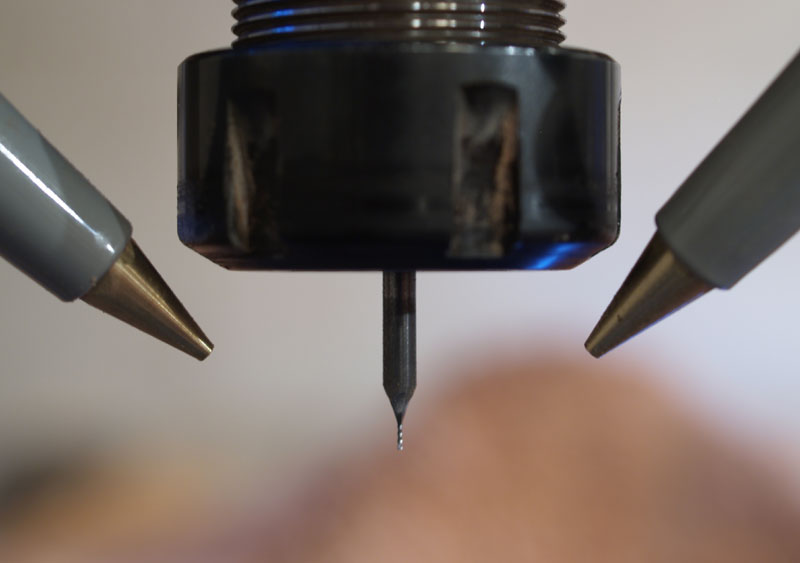Great to see some activity here lately.
I've been doing some fret slotting in ebony and rosewood and I'm also writing a short article about the process with RM Mottola. I just wanted to see if anyone else was slotting, and whether they'd be willing to share info about feed rates, etc.
My machine is a sturdy DIY machine with a heavy aluminum frame and a 2.25 HP PC 892 on it. Steppers, ballscrews, linear rails, vacuum holding for parts.
Based on the Onsrud datasheets and the RobbJack Calculator, I've been working in the feed rate range of 12-25 IPM, taking about .015"-.020" depth of cut, with a .023" endmill spinning at 23K RPM. This gives a chip load/tooth of about .0006" at the higher speeds. No problems at these speeds.
I've seen references to taking full depth (.080"+) cuts at equivalent speeds (25 IPM), but I'm nervous to try this and the forumlas don't seem to support this kind of aggressive work with a small cutter.
Any thoughts or practical numbers for me to work with before I start breaking bits?
Thanks,
Steve
|
